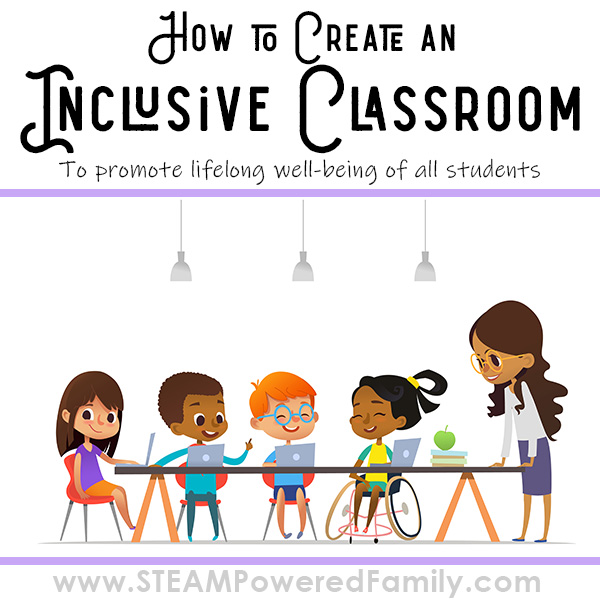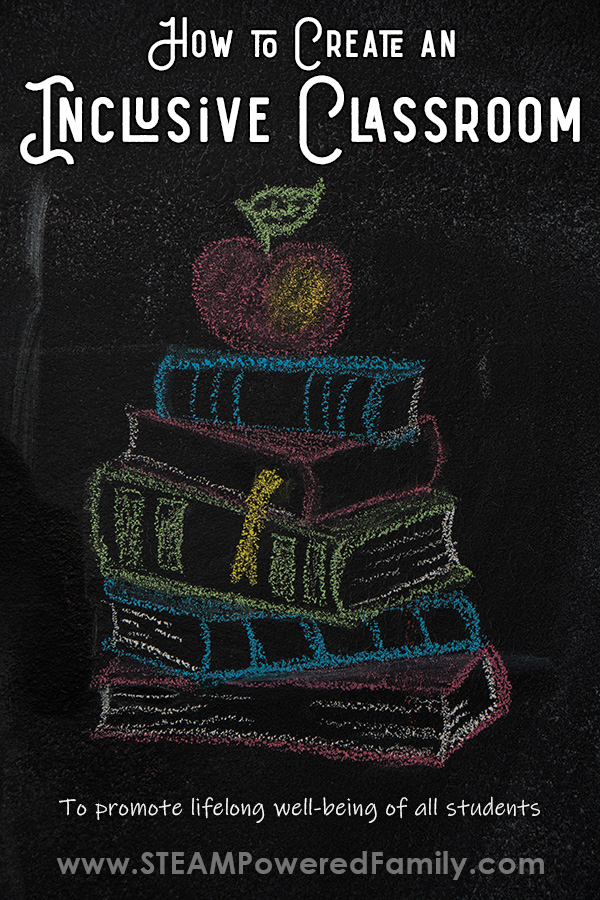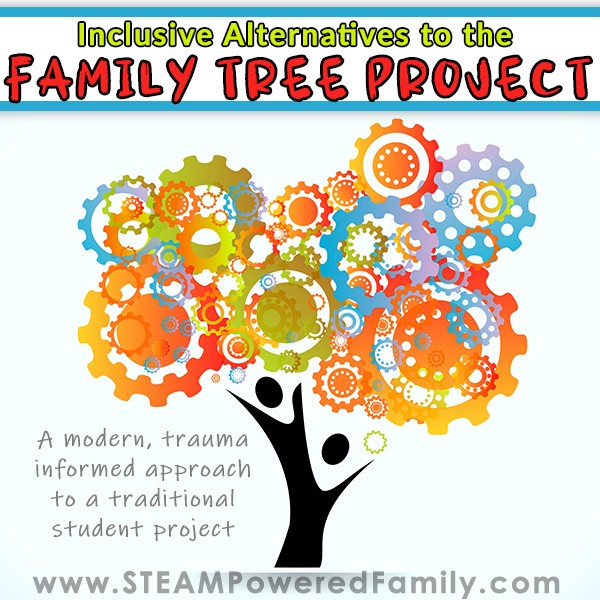How to Create an Inclusive Classroom
An inclusive classroom. Most educators would agree that inclusion is a common goal in every classroom and school. Especially here at STEAM Powered Family where we embrace the ideal that all children can learn, we simply need to learn how to teach them.
Part of achieving that goal is creating the right environment that is inclusive of all children. However, it is not only teachers that hold the responsibility to promote inclusion. Our students are role models to each other as they learn, grow and develop as unique and socially intelligent individuals. Parents play a huge role in that development. In the school, everyone, from the custodian to the principal, also plays a role in knowing how to effectively promote an inclusive learning environment. Working together we can create amazing opportunities for all our children.
How to Create an Inclusive Learning Environment

Disclaimer: This article may contain commission or affiliate links. As an Amazon Influencer I earn from qualifying purchases.
Not seeing our videos? Turn off any adblockers to ensure our video feed can be seen. Or visit our YouTube channel to see if the video has been uploaded there. We are slowly uploading our archives. Thanks!
To teach our children inclusiveness is to give them the gift of one of the most highly desired life skills in today’s world. As they grow, they can carry these important qualities throughout their personal and professional lives. Research shows this leads to greater satisfaction, well-being and happiness in life.
Something we want for all of our children.
Children that experience isolation and a lack of inclusiveness are more likely affected by some form of childhood trauma. After a series of traumatic events, a child may be slower to develop crucial emotional and behavioral skills and, sadly, can be left to question their own individuality and value.
Sadly, children who have experienced childhood trauma are also more likely to struggle to fit in and connect with peers and teachers, making it difficult for them to feel included. This can lead to them experiencing even more trauma in the school environment. That’s why it is so important that we work even harder to connect with these children to provide them with the inclusive and safe environment they so desperately need.
Let’s look at the basics of promoting inclusion in our schools through the building of an inclusive classroom.
Emotional Regulation
Childhood trauma and other special needs can cause an imbalance in a child’s mood and struggles with emotional intelligence. This can cause confusion for the child and their peers resulting in difficult social situations. When we provide the tools and resources to properly express their emotions without judgement, a student is likely to avoid harsh scrutiny from their peers.
Collaborating with the school counselor regarding the emotional health of your students is important. They can act as a bridge with the parents, guardians and caregivers of the students experiencing social and personal challenges. Working together, issues can be addressed proactively and effectively with the best interests of the child at the forefront.
Collaborate with Other Educators
Open communication between you and other educators is the gateway to better understanding a child’s behavior and creating an inclusive classroom. A child in every developmental stage can express emotions that are complicated and difficult to understand. By comparing notes in a non-judgmental way, you can work together to identify behavior patterns and triggers. This can help you find consistent ways to help a child at all times in the school environment.
Another benefit of involving multiple educators is continuity. By having more than one positive adult role model, you can effectively provide the child with a stable learning environment. If the child has adults they trust and feel safe with, they will be able to let their guard down and their true spirits will shine through.
Help Build Friendships
While many students find it easy to build friendships, it may be more complicated for a student who has special needs, is from a different culture, identifies with the LGBTQ community, has dealt with trauma, or feels different and like an outsider for any reason. These students may find it very difficult to establish and maintain positive relationships with their classmates. This in turn can lead to high levels of anxiety, which greater complicates their relationships.
By better understanding each child and focusing on their unique traits and talents, you can help them find connections. There is bound to be at least one other classmate who has some similar interests. Foster those connections.
Connection helps students feel valued and allows their bodies to feel safe, be open to learning, and trust others.
In an inclusive school environment all students will see the value of differences and how it is important to build friendships with people who are different from them. This benefits all students.
Embrace Diversity
In our world of incredibly diverse people from an immense range of backgrounds and experiences, embracing the diversity of all students and educators is a must. One way to educate your students on diversity is to collaborate with other classrooms and schools on projects.
In this age of technology, we can connect with schools and students from different cultures across town and around the world. All with the click of a mouse. Take advantage of the incredible opportunities afforded by technology by starting collaborative projects. Pen pal programs, shared educational experiences, or joint ventures where you work together from different communities towards a common goal. There are so many ideas.
By bringing students of all ages and backgrounds together, diversity can be celebrated throughout the entire school, community and world.
Educate Yourself
As an educator, most of your students expect you to know everything. That’s virtually impossible. However, getting to know each student on a personal level will aid you in understanding and empathizing in their personal experiences.
Asking your students the right questions can help you build a solid foundation of trust. Eventually, (with the help of your new-found expertise), you can foster trust with their classmates.
Active listening skills will help you learn who your students are as unique, special people. This knowledge will help you create an inclusive classroom where the needs of each child are understood.
Be Adaptable
A growing child can be unpredictable in their behaviors. Their brain grows and develops at rapid rates, especially if they experience any childhood trauma. Being adaptable to their behaviors is one of the best gifts you can give to your classroom. Not only will you be better prepared if a difficult situation happens, but you can help other students provide understanding and support when one of them is struggling.
It’s okay to not be okay. We need to encourage everyone in our classrooms to recognize that we all struggle. We can also be there to help when someone needs it.
Provide Safety
A safe learning environment is the best learning environment. When children feel safe in the classroom, they are more likely to be open to others about their uniqueness and interests. This creates long-lasting friendships among peers as they feel comfortable including others in their day-to-day tasks. Teaching your students that they can safely express their feelings with you can help build a healthy, safe classroom.
Be an Advocate
Becoming an advocate for each child in your classroom will provide ample opportunities for growth, inclusion and even to become an example as a fantastic educator in your district. To be an advocate for your students means to go above and beyond for each one of them. Regardless of their life experiences, backgrounds and progress in their academic abilities. Your students look up to you. Be an advocate and look up to your students.
Providing an inclusive classroom environment for our students will build the bridge to effective communication, trustworthiness and a new hope for those who struggle to fit in. As teachers, we can use our role to avoid exclusion of our students by taking ownership of our own learning and development for the years to come.
The greatest gift we can give our kids is the power of inclusion and embracing differences. Research shows this fosters lifelong well-being. Something we wish for all of our children. By creating an inclusive classroom, we can provide this to all of our students while they are in our care.






